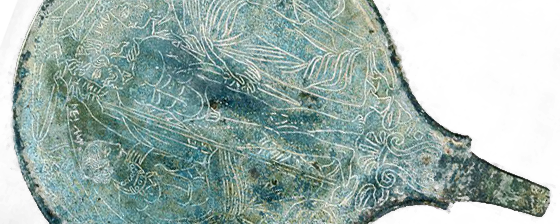Etruscan Mirrors in Austria: The Kunsthistorisches Museum Vienna and other public collections
Etruscan mirrors form one of the largest object groups in Etruscan art; and this project intends to produce a comprehensive study of Etruscan mirrors held in Austria – those in the Kunsthistorisches Museum Vienna and the ones housed in other Austrian public collections. The aim is a detailed examination of all extant mirrors, to be published as the volume AUSTRIA in the Corpus Speculorum Etruscorum (CSE).
A collaboration between the Department of Ancient History, Epigraphy and Papyrology of the University of Vienna, the Collection of Greek and Roman Antiquities of the Kunsthistorisches Museum Vienna, and the Computer Vision Lab (CVL) of the Vienna University of Technology (TU Wien), the project is led by the Etruscologist Petra Amann.
Over 3.000 bronze mirrors are known to date. These are made of a special alloy, and have one highly-polished reflecting side that served as a mirror. They were produced between the second half of the sixth and the second century B.C.E., a period that comprises their evolution from initially outstanding examples of Etruscan craftsmanship to the mass-produced mirrors typical of the final two or three centuries. Within this group we can differentiate between, for example, hand mirrors (consisting of a disc with attached handle) and box mirrors embellished with relief décor. The majority of mirrors with handles feature on the reverse linear depictions of scenes from (mainly) Greek mythology, occasionally complemented by Etruscan inscriptions. These images provide a wealth of information on Etruscan culture, especially art history, but also religion and myth as well as social history.
Etruscan mirrors were first studied in the nineteenth century, but a systematic examination of museum holdings and similar collections was only begun in the 1980s, with findings published following consistent criteria in a scholarly series, the Corpus Speculorum Etruscorum. Organized by country and museums, volumes are published at irregular intervals, 35 of which are currently available. Until now, this renowned series has lacked a study of Etruscan mirrors in Austria.
The project aims to fill this lacuna and to carry out a comprehensive scholarly analysis of the circa sixty Etruscan mirrors held by Austrian museums and public collections. This includes graphic depictions of the artefacts using state-of-the-art techniques of digital pictorial documentation, with exact drawings after 3-D scans produced in collaboration with the CVL of the TU Wien. The majority of Austrian mirrors (both those with handles and box mirrors) are in the Collection of Greek and Roman Antiquities of the Kunsthistorisches Museum Vienna, whose holdings comprise early examples as well as others with Etruscan inscriptions or rare mythological scenes, some of which have not previously been published.

